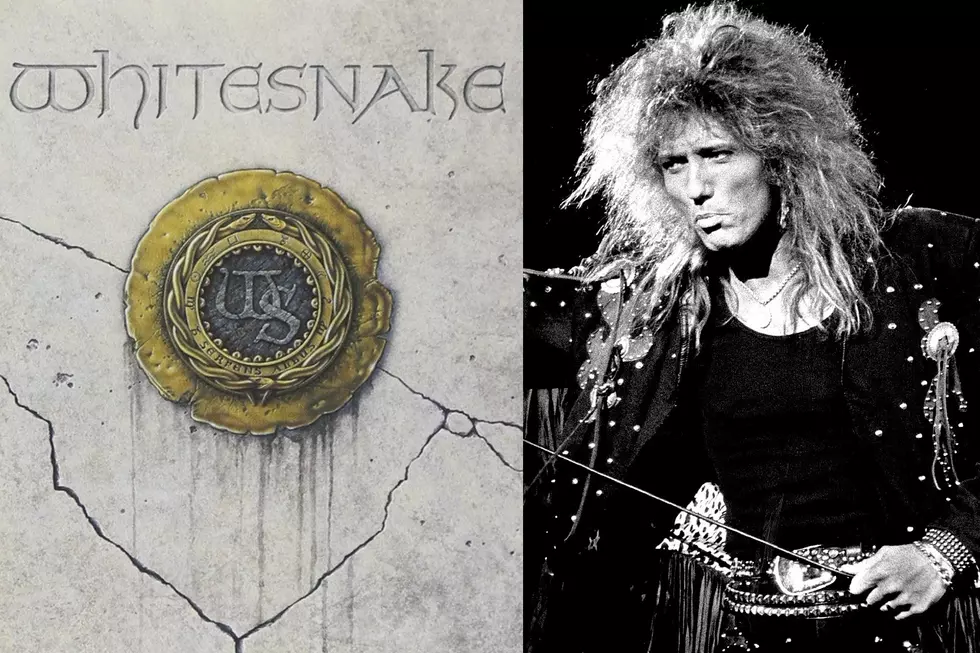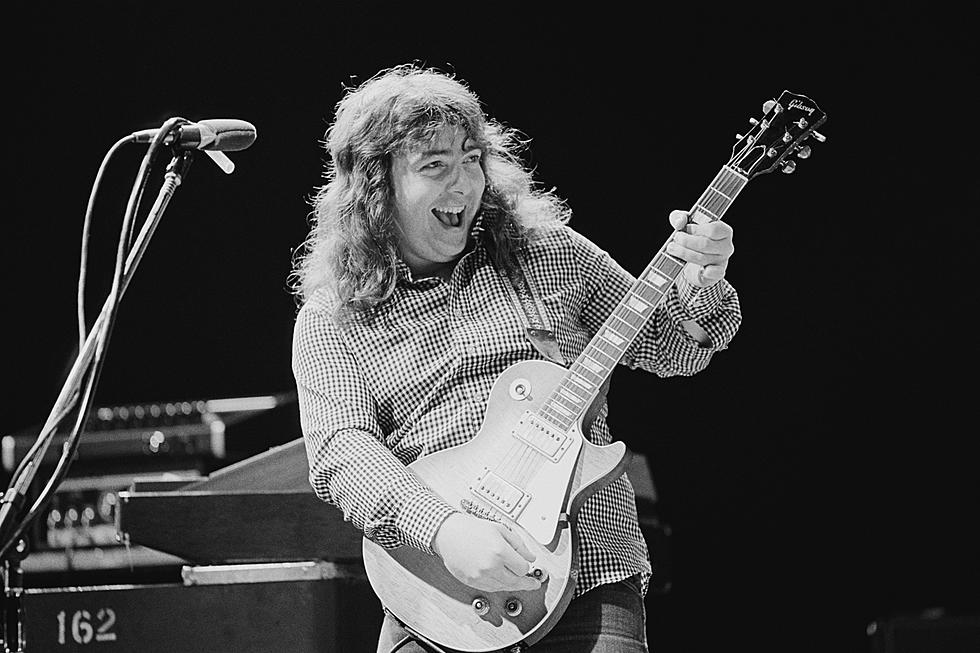
Whitesnake’s Self-Titled Album: Beyond ‘Still of the Night’
David Coverdale went for broke on Whitesnake's 1987 self-titled album, scoring a career-defining record and an embarrassment of riches in return.
Released in the U.S. on April 7, 1987, this seventh LP transformed Whitesnake from a modestly successful blues-rock outfit into a world-conquering pop-metal juggernaut, selling 8 million copies in the U.S. alone and spawning a No. 1 single.
Whitesnake nearly didn't happen, however, as Coverdale came down with a crippling sinus infection that put him out of commission for eight months during the recording process. When he finally recovered and reentered the studio with new producer Keith Olsen, the first song he sang became Whitesnake's lead single and its opening track on the European version of the album (known as 1987): the Herculean "Still of the Night." It was an auspicious start to the rebooted Whitesnake sessions. Coverdale told In the Studio With Redbeard in 2017 that he only "sang the song twice, just fingers crossed — and that's what's on the record."
His newfound power is evident throughout "Still of the Night," a pulverizing hard-rock epic full of clobbering riffs, skyscraping vocals and an atmospheric interlude bearing more than a passing resemblance to Led Zeppelin's "Whole Lotta Love." (The similarities were not lost on Robert Plant.)
Watch Whitesnake's 'Still of the Night' Video
"Still of the Night" began as a demo that Coverdale and guitarist Ritchie Blackmore had worked on while Coverdale was still in Deep Purple. Coverdale beefed up the demo and handed it off to Whitesnake's hotshot new guitarist, John Sykes (formerly of Thin Lizzy and Tygers of Pan Tang), who reshaped it with his acrobatic fretwork. It all heralded Whitesnake’s pivot from blues-rock to glam metal.
"I took it as far as I could, then gave it to Sykesy when we were in the south of France, and he put the big guitar hero stuff on there," Coverdale told Metal Hammer in 2009. "John hated the blues, so I had to work within those parameters. I manipulated it to be electric blues, but how he performed was fabulous for his time and relatively unique because of the songs. There were a lot of people doing that widdly stuff, but they didn’t have the quality of those songs."
"Still of the Night" peaked at No. 18 on Billboard's rock chart, getting the album's single campaign off to a strong start. But its performance paled in comparison to the record's next two singles, the bleeding-heart power ballads "Here I Go Again" and "Is This Love."
The latter had previously appeared as the lead single off 1982's Saints & Sinners; its 1987 incarnation was given a new radio-metal sheen, a welcome lyrical amendment ("Like a hobo I was born to walk alone" was blessedly changed to "Like a drifter...") and a souped-up guitar solo from Adrian Vandenberg.
Watch Whitesnake's 'Here I Go Again' Video
These new elements, combined with a sultry music video featuring Coverdale's then-girlfriend (and eventual wife) Tawny Kitaen cartwheeling over the hood of two Jaguars, rocketed "Here I Go Again" to the top of the Billboard Hot 100 in October 1987.
Eager to strike while the iron was hot, Geffen Records issued "Is This Love" as Whitesnake's third single that month. Accompanied by another Kitaen-starring video, the song peaked at No. 2 on the Hot 100 while helping Whitesnake to quadruple-platinum status by the end of the year.
While these back-to-back ballads catapulted Whitesnake to worldwide stardom, they also alienated some longtime fans who pined for the band's blues-rock sound of yesteryear. (Coverdale told Redbeard he "got tired of seeing myself on MTV" and called this era "the only time ... that I'd embraced a fashion presentation, as opposed to being stylized in what I do.") But fans of the band's hard-rock heyday should have found plenty to love outside Whitesnake's three tentpole songs.
The album's fourth and final single, "Give Me All Your Love," returned to the hard-rock realm with a swinging, up-tempo groove and a wealth of slick guitar riffs from Sykes. (It also brought another virtuoso into Whitesnake's orbit: Dio alum and future Def Leppard guitarist Vivian Campbell, who cut a furious solo for the single version of the track.)
Listen to Whitesnake's 'Crying in the Rain (1987 Version)'
Another pair of rockers, "Bad Boys" and "Children of the Night," recall Shout at the Devil-era Motley Crue with their lightning-fast riffage and muscular drumming. Meanwhile, "Straight for the Heart" is a slice of deliciously frothy pop-metal à la Bon Jovi's "Wild in the Streets" that transcends its silliness thanks to Coverdale's ironclad vocals and the band's vivacious performance.
Coverdale is naturally the focal point of Whitesnake, and his raspy howl and head-voice shrieks never cease to amaze. Perhaps nowhere does he sound as captivating as on Whitesnake's U.S. album opener, "Crying in the Rain," yet another Saints & Sinners track that Coverdale re-recorded as part of a twofer deal with label boss David Geffen. The singer flexes his gravelly mid-range and stratospheric high notes across the blues-metal epic, replete with yet another mind-bending guitar solo from Sykes. (Seeing a pattern here?)
Whitesnake's two power ballad singles may have pushed Coverdale and Co. to unprecedented commercial heights, but the album remains a cornerstone of late-'80s hard rock because of its high-octane anthems. Even Coverdale, who staked his career on the album, was gobsmacked by its success.
"We had a plan but, Jesus Christ, are you kidding?" he told Metal Hammer. "My whole plan was to hopefully make an album that sells a bit more than the last one and hopefully I’ll sing a bit better, it all sounds a bit better and we’ll get to the point quicker in the lyrics. It was all just very basic spices for the meal, you know? ... We had a five-year, unbelievable relationship with MTV and it worked out very, very well for us – and in essence, it helped us to make that transition that I wanted, and then it all became astonishingly successful."
Top 30 Glam Metal Albums
Whitesnake Video Star Tawny Kitaen's Rock ‘n’ Roll History
More From Ultimate Classic Rock









